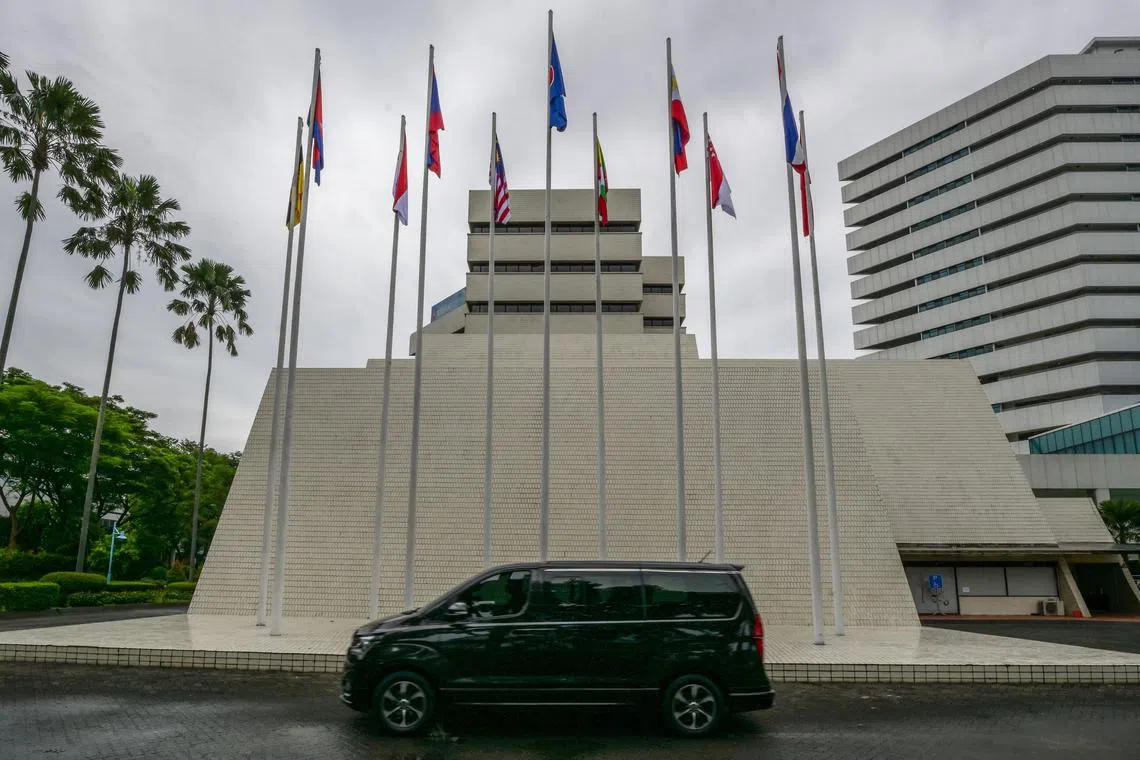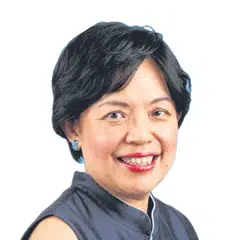Asean still has investment opportunities despite a more challenging environment: Panel
Sign up now: Get ST's newsletters delivered to your inbox

High adult literacy rate, a self-sufficient supply chain and digitally savvy consumer market will drive growth in the region.
PHOTO: AFP
Follow topic:
SINGAPORE – Investors can still count on the resilience of Asean despite the more challenging environment stemming from higher interest rates, labour shortages and climate change, noted an investment seminar.
Panellists pointed to the high adult literacy rate and a self-sufficient supply chain, which gives it advantages over other countries and regions, in addition to its digitally savvy consumer market.
These factors will drive growth in the region, participants heard at the event held by UOB Asset Management on Tuesday.
Mr Thio Boon Kiat, its chief executive, noted that the electronics sector has attracted more than half of the manufacturing money flowing into Asean, compared with just 12 per cent in 2020 – a trend that makes the region a hub for high-tech manufacturing.
The strongest growth in 2022 – 134 per cent – came from electric vehicles (EVs), electronics, semiconductors and pharmaceuticals, he added.
Asean can offer manufacturers a supply chain for EVs – from the Philippines for nickel supplies to Indonesia, where this nickel is smelted, Malaysia for battery production and Thailand for the final vehicle assembly.
Indonesia has promise in the EV area,
He noted that five out of the seven raw materials needed for EV battery production are found in the country, where nickel export value grew from US$1 billion in 2014 to US$32 billion (S$43 billion) in 2022.
UOB Asset Management estimates that Indonesia’s foreign direct investment can potentially grow by 50 per cent, from US$42 billion to US$65 billion in 2025, mainly in the mining sector and from places such as Singapore, China and Hong Kong.
Some of the larger investments on this front come from South Korea’s LG Energy, which has committed US$9 billion to build an EV battery plant in Indonesia.
China’s CATL committed US$6 billion in 2022 in the areas of nickel mining and processing, battery material, battery manufacturing and recycling.
Asean also benefits from an educated workforce. The adult literacy rate in the five major regional economies is over 94 per cent, compared with the global average of 87 per cent. Asean is also digitally savvy, with 460 million Internet users, more than the entire United States population of 330 million.
UOB Asset Management is confident that Asean can double its gross domestic product from US$4 trillion to US$8 trillion by 2030 and be the world’s fourth-largest economy.
It can also play a collaborative role with China. The constraints faced during China’s zero-Covid policy and underlying US-China tensions have prompted global manufacturers to look at a “China plus one” strategy
Mr Colin Ng, UOB Asset Management’s head of Asia equities, suggests that investors combine a bottom-up analysis of stocks with country allocation decisions.
Apart from its traditional strength as a commodity supplier with its palm oil and thermal coal exports, Indonesia can play a significant role in the EV space, Mr Ng said. Nickel player Vale Indonesia is an example of an Indonesian stock that has performed well.
Thailand is known for its medical tourism and also has a strong position in medical device production. Medical-related stocks such as Bangkok Dusit Medical Services and Bumrungrad Hospital have already risen significantly from a year ago, even before Thailand’s reopening.
The supply chain shift and growth in tech-related manufacturing have also created opportunities to invest in the Malaysian market, with listed stocks in the sector such as Pentamaster which has grown 30 times since mid-2016, according to Mr Francis Eng, UOB Asset Management Malaysia’s chief investment officer.
Mr Eng added that there is significant potential for stocks to move up, given many Internet stocks in the region are 70 to 80 per cent off their peak and they are now focused on profitability rather than revenue.


